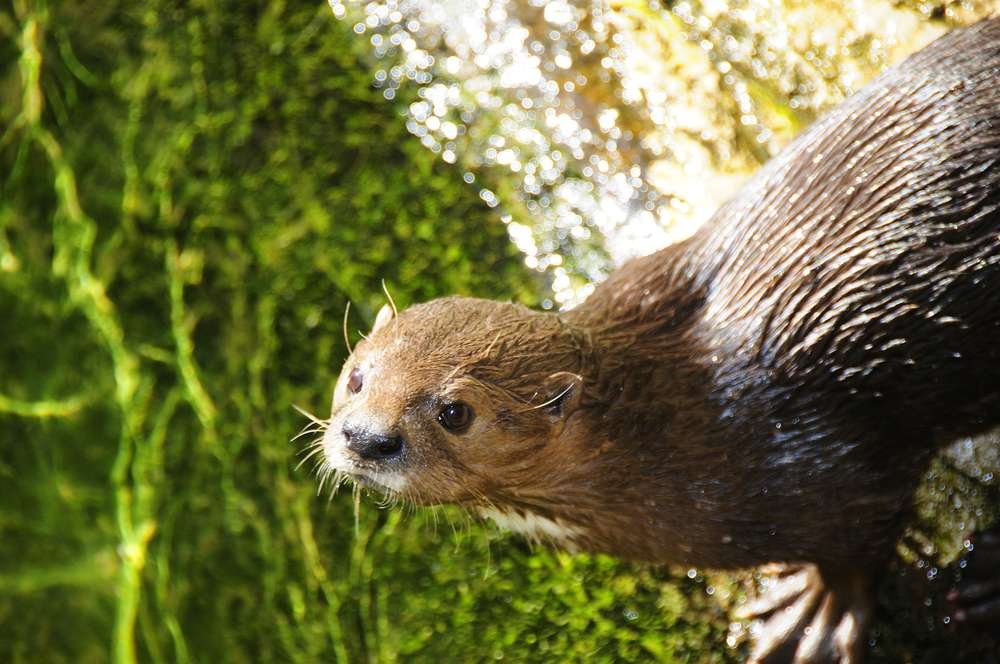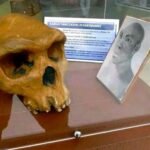African Clawless Otter
( Cape clawless otter or groot otter )
- Aonyx capensis
- IUCN Status: Near Threatened
- Trend: decreasing

- Kingdom: Animalia
- Phylum: Chordata
- Class: Mammalia
- Order: Carnivora
- Family: Mustelidae
- Genus: Aonyx
Share:
General Information
The African clawless otter is the second-largest freshwater otter species. It inhabits permanent water bodies in savannah and lowland forest areas through most of sub-Saharan Africa. It is characterised by partly webbed and clawless feet, from which their name is derived.
Fun Facts!
Description
- Length: 113–163 cm
- Weight: 10–36 kg
Ecology and Behaviour
Though mostly solitary animals, African clawless otters will live in neighboring territories of family groups of up to five individuals. Each still having its own range within that territory, they mostly keep to themselves unless seeking a mate. Territories are marked using a pair of anal glands which secrete a particular scent. Each otter is very territorial over its particular range.
The African clawless otter spends its days swimming and catching food. They return to burrows (holts) for safety, cooling or a rubdown using grasses and leaves. Mainly aquatic creatures, their tails are used for locomotion and propel them through the water. They are also used for balance when walking or sitting upright. The diet of Aonyx capensis primarily includes water-dwelling animals, such as crabs, fish, frogs and worms. They dive after prey to catch it, then swim to shore again, where they eat. Their fore paws come in handy as searching devices and are great tools for digging on the muddy bottoms of ponds and rivers, picking up rocks and looking under logs. Extremely sensitive whiskers (vibrissae) are used as sensors in the water to pick up the movements of potential prey.
Conservation
The spotted-necked otter is listed as “Near Threatened” on the IUCN Red list and is in decline, mostly due to habitat destruction and pollution of its clear-water habitats.
Distribution and Habitat
The clawless otter is found in the larger streams and rivers of Kafue and Lochinvar and occasionally along the Zambezi. It is larger than the spotted necked otter and, as its name implies, it has no claws and its front feet are not webbed. African clawless otters can be found anywhere from open coastal plains, to semiarid regions, to densely forested areas. Surviving mostly in southern Africa, the otters live in areas surrounding permanent bodies of water, usually surrounded by some form of foliage. Logs, branches, and loose foliage greatly appeal to the otter as this provides shelter, shade, and great rolling opportunities. Slow and rather clumsy on land, they build burrows in banks near water, allowing for easier food access and a quick escape from predators
Interaction with humans
Humans pose the biggest threat to them. They will often forage in man-made fisheries and may be hunted or become entangled in nets. Over-fishing by humans may reduce the food supply available to otters. They are sometimes hunted for their thick, soft pelts, which humans use in forms of clothing. In forested areas, logging may be a major threat, since erosion leads to greatly increased turbidity in rivers which can in turn greatly reduce the populations of fish on which the otters depend. This may well be a far greater threat to otters than hunting.
No donation to this project yet.
| M | T | W | T | F | S | S |
|---|---|---|---|---|---|---|
| 1 | 2 | 3 | 4 | 5 | 6 | 7 |
| 8 | 9 | 10 | 11 | 12 | 13 | 14 |
| 15 | 16 | 17 | 18 | 19 | 20 | 21 |
| 22 | 23 | 24 | 25 | 26 | 27 | 28 |
| 29 | 30 | 31 | ||||


